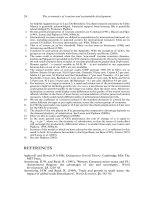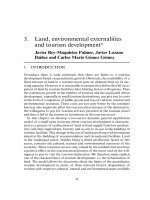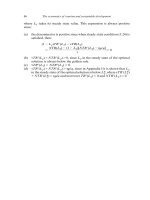THE ECONOMICS OF MONEY,BANKING, AND FINANCIAL MARKETS 198
Bạn đang xem bản rút gọn của tài liệu. Xem và tải ngay bản đầy đủ của tài liệu tại đây (27.22 KB, 1 trang )
CHAPTER 8
An Economic Analysis
of Financial Structure
LE A RNI NG OB J ECTI VES
After studying this chapter you should be able to
1. depict how asymmetric information results in adverse selection and moral hazard
problems that interfere with the efficient functioning of financial markets
2. express how government regulation, the private production and sale of
information, and financial intermediaries can lessen, but cannot eliminate,
asymmetric information problems
3. discuss why securities regulators are introducing new rules and regulations, such
as the Sarbanes-Oxley Act in the United States
PRE VI EW
A healthy and vibrant economy requires a financial system that moves funds from
people who save to people who have productive investment opportunities. But how
does the financial system make sure that your hard-earned savings get channelled
to Paula the Productive Investor rather than to Benny the Bum?
This chapter answers that question by providing an economic analysis of how our
financial structure is designed to promote economic efficiency. The analysis focuses
on a few simple but powerful economic concepts that enable us to explain features
of our financial system such as why financial contracts are written as they are and
why financial intermediaries are more important than securities markets for getting
funds to borrowers. The analysis also demonstrates the important link between the
financial system and the performance of the aggregate economy, which is the subject of the last part of the book.
BASI C FACT S ABO UT FI NA NCI AL STRU CT U RE
THRO UG HO U T TH E WO RLD
The financial system is complex in structure and function throughout the world.
It includes many different types of institutions: banks, insurance companies,
mutual funds, stock and bond markets, and so on all of which are regulated by
government. The financial system channels billions of dollars per year from
savers to people with productive investment opportunities. If we take a close
look at financial structure all over the world, we find eight basic facts, some of
which are quite surprising, that we need to explain in order to understand how
the financial system works.
166









